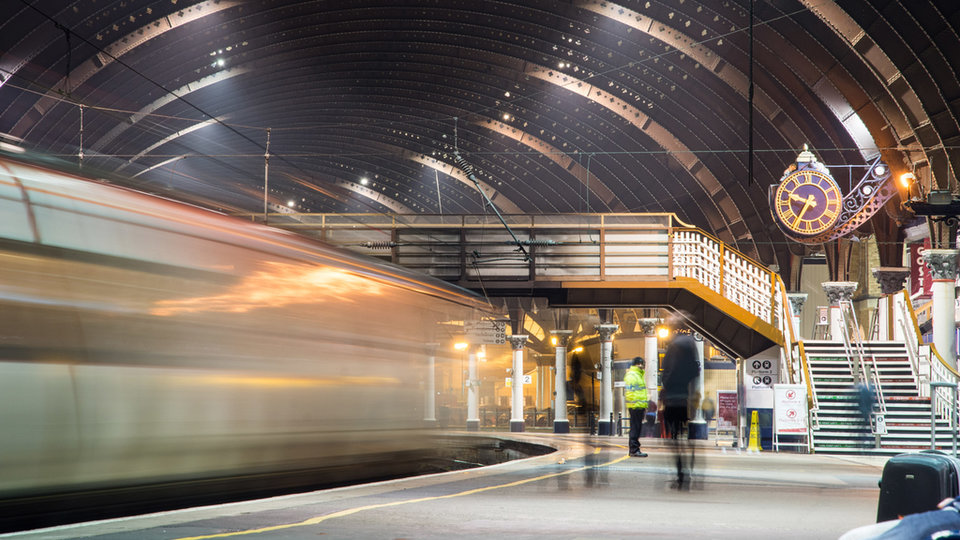Operations
Different tracks: inside the UK’s new Rail Technical Strategy
The UK rail industry has published its first new Rail Technical Strategy document since 2012 in an effort to refresh the industry’s vision for the future and address challenges in the wake of Covid-19. Julian Turner reports.
"W
e’ve been too slow on innovation and it is time that we reset,” wrote Network Rail CEO Andrew Haines in his foreword to the Rail Technical Strategy (RTS). “The [Covid-19] pandemic has demonstrated that we can be more agile and deliver better for passengers and freight users. We must recognise the importance of innovation beyond today and find longer-term solutions fit for the future of rail.”
Part admission, part statement of intent, Haines’s introduction to what is the first new Rail Technical Strategy document in eight years encapsulates Network Rail’s vision for the UK rail system, one that prioritises cooperation among all stakeholders; the take-up of industry 4.0 technologies that deliver real, tangible benefits for customers; and attracting and retaining a new generation of digital talent.
Network Rail CEO Andrew Haines. Credit: Network Rail

Putting passengers first
Can Network Rail deliver? The new RTS contains five ‘functional priorities’ as well as a roadmap towards achieving these; both short-term (by 2025) and longer-term (by 2040) goals; and a range of desired outcomes.
The emphasis throughout is on innovation. This will inevitably come with a hefty price tag, with the UK Government already having pledged £350m to deliver real-time digital signalling on part of the East Coast Main Line (ECML). Like the ECML, future investment in digital technologies must translate into practical solutions that make the railway more reliable, safe and, crucially, passenger centric.
The updated Rail Technical Strategy is a major shift for the industry
‘Easy to use for all’ centres on the provision of journey information to passengers. This is available at present, but is not always reliable and useful. By 2025, the RTS envisages that customers will receive inclusive real-time information on journeys, including alternative routes when disruptions occur.
“Existing solutions must be harnessed to provide seamless end-to-end journeys,” writes Transport Focus CEO Anthony Smith in the RTS. “From accelerating the adoption of step-free inclusive design, to the ‘internet of trains’ and big data to improve punctuality. Reliability and accuracy of information is essential.”
Reducing carbon emissions
Of course, business-driven innovation must be balanced with environmental imperatives such as minimising carbon and air emissions using cheaper and less disruptive electrification, zero-carbon diesel replacement, enhancing efficiency and removing emissions at source.
All this needs to be completed against the backdrop of Covid-19, which has placed unprecedented strain on rail revenues, while at the same time presenting opportunities for growth in the shape of the potential modal shift from air to rail.
Over 70% of passenger journeys are served by electric trains, but the sector still emits 3,500 ktonnes of CO2 from traction alone, while freight operations are still overwhelmingly reliant on diesel fuel.
Over 70% of passenger journeys are served by electric trains
The RTS notes that “concerns over cost and disruption following recent electrification schemes have undermined political support”. The 2025 roadmap includes standards and design for discontinuous electrification, and a power-supply strategy that embraces lineside, onboard and hydrogen, as well as smart grid, storage and load balancing. By 2040, high-speed and high-intensity lines are expected to be electrified.
“It is not a case of either electrification or alternative power – we will need both,” notes Malcolm Brown, CEO of Angel Trains and chair of the Decarbonisation Taskforce. “Over the next decade or so, the need to replace over 1,000 sprinter vehicles gives the potential for a step-change in zero-emission, self-powered vehicles on the network. We mustn’t waste this chance.”

York Railway Station, UK in 2017. Credit: Joe Dunckley | Shutterstock.com
Optimised train operations
The RTS recognises that retaining existing rail customers and attracting new ones requires high service reliability, better train planning and improved solutions to manage and increase capacity.
“The timetabling process has a long lead time and the working timetable generated doesn’t learn from actual running times,” the report states. “The ‘short-term’ and ‘very short-term’ planning processes are very manual and not robust.”
By 2025, the RTS envisages that working timetables will be able to allocate allowances optimally
By 2025, the RTS envisages that working timetables will be able to allocate allowances optimally, decreasing the risk of significant disruption if delays do occur. Train paths will be added easily and reliably at short notice, and quality and recovery of service during disturbances will be improved.
Fast-forward a further 15 years, and demand-based operations on the UK rail network means that planning and re-planning of trains to meet customer needs can be achieved and communicated in near real time, while timetable development is informed by real-world operational performance.
Better by design
And so to that perennial passenger bugbear: reliability. According to the RTS, optimised design, remote and automatic inspection, and targeted interventions result in more reliable rail assets and less costly disruption to services. Key to this is the improved reliability and availability of existing rolling stock and fixed assets, as well as greater resilience to system stresses such as climate change.
Optimised design, remote and automatic inspection, and targeted interventions result in more reliable rail assets
In the next five years, the RTS aims to replace the current system – in which the timing of failures is an unpredictable response to faults that can overlook, or take insufficient account of, wider operational implications – to a scenario where the rail system is more resilient and knowledge is applied to improve system reliability, with the workforce guided by data and maintainers engaged in design.
The vision for 2040, meanwhile, is of “all assets performing with a known and appropriate level of reliability at component, sub-system and system levels and causing minimum disruptions”.
A more data-driven UK rail network
“This priority is at the very core of the Rail Technical Strategy, underpinning all its elements and essential for the success and competitiveness of the future railway system and offerings,” writes Siemens Mobility CEO Will Wilson. For UK rail customers, timely data means real-time system improvements and enhanced decision-making for a more reliable and stress-free travel experience.
By 2025, the combination of the rail data catalogue, National Access Point for rail data, and greater data sharing will make it easier for business and innovators to understand and access industry data.
By 2040, ambitious strategies on data accessibility and exploitation are expected to be implemented
By 2040, ambitious strategies on data accessibility and exploitation are expected to be implemented, ensuring rail is recognised as a leading data-driven industry that manages, shares and exploits information.
“Having confidence in the cross-industry and wider societal advantages of data-sharing, and collaboratively working towards enabling them to happen, are crucial,” adds Wilson. “This can only occur if we collectively develop a much better understanding than we currently have of the size of the prize to be gained by improved data access and sharing at the societal, industry and individual company level.”

Digitisation is revolutionising how customers receive journey data, purchase tickets and interact with the rail network. Credit: Shutterstock | Rawpixel.com
A strategy for change
The new RTS recognises that the industry faces significant challenges, including the Covid-19 crisis; decarbonisation towards net-zero goals, the continuing move to a more digitalised and data-driven society; and the need to secure a skilled, diverse workforce to deliver the rail network of the future.
The updated RTS is a major shift for the industry
“This strategy provides us with a spring-board to address long-standing challenges that the rail industry has faced,” says Haines. “We have an opportunity now, with this strategy, to build long-term solutions in areas such as environmental sustainability, affordability, reliability and safety.
“The updated RTS is a major shift for the industry. It outlines how we are making a step change in innovation across the rail sector.”